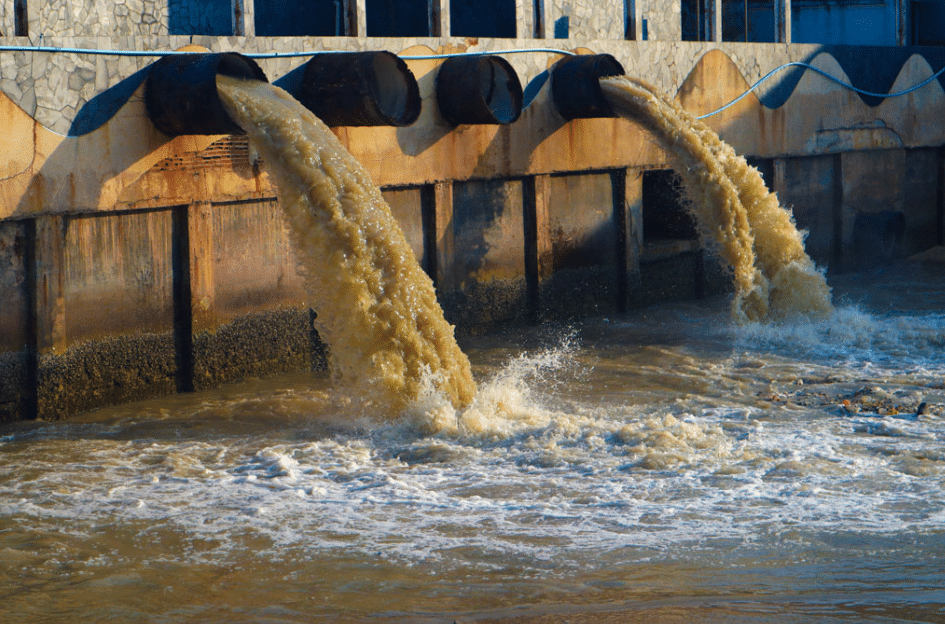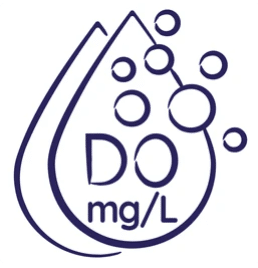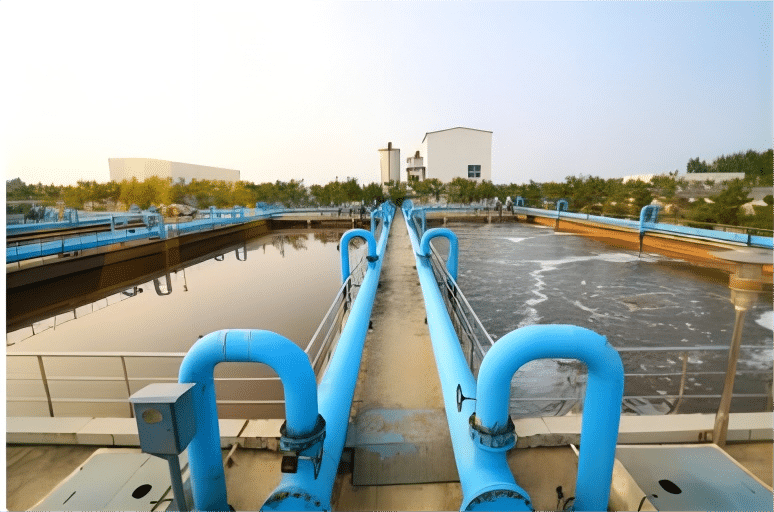Dissolved oxygen, a very important water quality parameter in the secondary wastewater treatment process, is critical to the survival of aquatic organisms and our ability to effectively reuse wastewater. However, the level of DO is affected by many factors, including temperature, pH, and organic loading. Therefore, effective treatment of DO is critical to wastewater treatment and the health of the aquatic ecosystem.
Dissolved Oxygen In Wastewater
What is wastewater?
Wastewater, also known as raw sewage, refers to water generated from living, industrial production and other activities, which contains a variety of hazardous substances or pathogens, temperature, color, dissolved oxygen and other parameters exceeding a certain limit, and can not be directly discharged into the natural water body.
There are various types of wastewater, which can be divided into domestic wastewater, industrial wastewater, agricultural wastewater, etc. According to different sources, no matter what kind of raw sewage, only through the correct treatment, can minimize the impact on the environment. Treatment of wastewater is also an important part of environmental protection.

What is dissolved oxygen in wastewater?
Dissolved oxygen (abbreviated DO) is oxygen that exists in a body of water as a gas, rather than as oxides or other forms bound to water molecules. Dissolved oxygen in water is necessary for the life of aquatic organisms, such as fish and insects, as well as microorganisms that play a key role in the wastewater treatment process. Dissolved oxygen is important in wastewater treatment because oxygen is required for many wastewater treatment processes. For example, in an activated sludge system, microorganisms use oxygen dissolved in the water to break down organic material, an important step in the wastewater treatment process. If the amount of dissolved oxygen in the wastewater is insufficient, these microorganisms are unable to effectively break down the organic material and the efficiency of wastewater treatment decreases. Similarly, dissolved oxygen plays a key role in preventing bad odors and other types of water quality problems.
What is the range of dissolved oxygen?

The concentration of dissolved oxygen is usually expressed in milligrams per liter (mg/L) or parts per million (ppm). Under normal ambient conditions (e.g., temperature 20°C, 1 atm), fresh water is saturated with approximately 9.1 mg/L. Actual DO levels may vary depending on water temperature, salinity, pressure, and changes in organic matter and biological activity in the water.
Why dissolved oxygen in wastewater is important?
Monitoring and managing dissolved oxygen levels in wastewater is an important part of wastewater treatment, and is important for ensuring the effectiveness of wastewater treatment, preventing the production of malodorous gases, and protecting the aquatic ecosystem.
- Biodegradation: Most of the wastewater treatment processes are carried out through the use of microorganisms to break down organic matter into harmless or low-toxicity compounds. The microorganisms require sufficient dissolved oxygen to carry out this biodegradation process. If the dissolved oxygen is insufficient, the biodegradation process will be blocked, resulting in wastewater can not be effectively treated.
- Odor control: If the dissolved oxygen content in the wastewater is too low, it may lead to anaerobic decomposition of organic substances in the wastewater, producing hydrogen sulfide, ammonia and other malodorous gases.
- Water ecology: Before discharging wastewater into natural water bodies, a certain level of dissolved oxygen needs to be ensured, as dissolved oxygen is vital for the survival of aquatic organisms (e.g. fish, aquatic insects). If the dissolved oxygen level of the discharged wastewater is too low, it may cause damage to the ecology of the receiving water body.

Wastewater Treatment At Wastewater Treatment Plants
6 Types Of Wastewater Treatment Plants
The classification is usually based on the treatment process, the treatment capacity and the type of wastewater being treated.
- Municipal wastewater treatment plant: This type of wastewater treatment plant mainly deals with the city’s domestic sewage and some industrial sewage, including household wastewater discharges and urban stormwater discharges.
- Industrial wastewater treatment plant: Industrial wastewater treatment plant is mainly for industrial use of water with special pollutants, such as electronics, chemical, food, textile, paper and other industries.
- Agricultural wastewater treatment plant: This type of wastewater treatment plant mainly deals with wastewater generated from agricultural activities, such as breeding wastewater and farm irrigation wastewater.
- Biological wastewater treatment plants: These wastewater treatment plants mainly use biological methods (such as activated sludge) for wastewater treatment.
- Physico-chemical wastewater treatment plants: These wastewater treatment plants mainly use physical and chemical methods for wastewater treatment, such as sedimentation, flocculation, filtration, adsorption and so on.
- Mixed wastewater treatment plant: Mixed wastewater treatment plant will combine a variety of treatment methods to achieve higher treatment results, especially for wastewater containing a variety of pollutants at the same time.
What is wastewater treatment at a wastewater treatment plant?
Wastewater treatment is the process of removing pollutants such as suspended solids, organics, pathogens, heavy metals, and other contaminants from wastewater by physical, chemical, and biological methods so that it meets certain discharge standards or reuse requirements.
3 Steps to Wastewater Treatment
- Primary treatment: Also known as physical treatment, wastewater solids in wastewater are mainly removed by wastewater screen, sedimentation, etc.
- Secondary treatment: also known as biological treatment, mainly through microorganisms in the wastewater organic matter into harmless substances, such as water and carbon dioxide.
- Tertiary treatment: also known as chemical treatment, removes pollutants such as phosphorus, nitrogen, heavy metals, etc. from wastewater mainly through various chemical methods, such as coagulation and precipitation, adsorption, ion exchange, etc., so that it meets the standards for discharge or reuse.
Some wastewater treatment plants also perform deeper treatment, such as reverse osmosis and membrane filtration methods, to meet water quality requirements for specific uses. Examples include industrial water, irrigation, and even direct drinking.
Wastewater Quality Parameters
| Water quality parameters | Numerical range |
| Dissolved Oxygen (DO) | 2-4 mg/L |
| PH | 6-9 |
| Ammonia (NH3-N) | < 15 mg/L |
| Total Nitrogen (TN) | < 20 mg/L |
| Total Phosphorus (TP) | < 1 mg/L |
| COD | < 50 mg/L |
| BOD | < 20 mg/L |
| Suspended Solids (SS) | < 30 mg/L |
| Temperature | < 500 mg/L |
| Dissolved Solids (TDS) | < 500 mg/L |
| Active Chlorine | < 0.5 mg/L |
How do you treat dissolved oxygen in wastewater?
The main concern with treating dissolved oxygen in wastewater is to keep it in the proper range, as dissolved oxygen is critical to water quality and the living environment of organisms in the water.
- Aeration: This is a common method of increasing the concentration of dissolved oxygen in water by forcing air or pure oxygen into the water. This is usually accomplished through the use of an aeration tank, which creates a large number of bubbles to increase the contact area between the gas and the water, thereby increasing the dissolution of oxygen.
- Mechanical agitation: Introducing air by creating a vortex or flow in the tank can also increase the concentration of dissolved oxygen in the water.
- Biological Treatment: In wastewater treatment, biological treatment methods can also affect dissolved oxygen levels. For example, activated sludge is a common biological treatment technique that utilizes microorganisms to convert organic matter into harmless substances and consume DO in the process. Therefore, the growth rate of the microorganisms needs to be controlled to ensure that the DO is within the appropriate range.
- Chemical Oxidation: If there are too many organic substances or other pollutants in the wastewater that affect the DO level, it can be treated by chemical oxidation. Chemical oxidation can not only directly increase the dissolved oxygen, but can also decompose organic substances or other pollutants, thus indirectly increasing the level of dissolved oxygen.
- Aeration blower: Aeration blower add oxygen to the wastewater to increase the concentration of dissolved oxygen in the water to meet the needs of microbial degradation of organic matter. The principle is to compress the air in the atmosphere, and then transport the compressed air to the wastewater through the aeration device. When the air is delivered to the wastewater, the compressed air forms many small bubbles. As these small bubbles rise to the surface of the water, the oxygen in the air will gradually dissolve in the water, thus increasing the dissolved oxygen concentration in the water. The aeration process also helps to mix the wastewater to ensure that the dissolved oxygen and the organic matter in the wastewater are in full contact to promote the growth of microorganisms and the degradation of organic matter.

Effects Of Unbalanced Dissolved Oxygen On Wastewater
Excessive Dissolved Oxygen: Excessive dissolved oxygen in wastewater does not cause immediate harm to microorganisms. However, excessive dissolved oxygen levels may mean that the aeration system is overworked, which can lead to wasted energy and premature wear and tear of equipment. In addition, excess oxygen may oxidize some of the organic material, forming difficult-to-biodegrade organics and affecting the biodegradation of the wastewater.
Low Dissolved Oxygen: Low dissolved oxygen levels may lead to reduced microbial activity in the wastewater treatment process, which in turn affects the biodegradation efficiency of the organic substances. In extreme cases, anaerobic conditions may occur and certain anaerobic microorganisms may produce malodorous gases such as hydrogen sulfide and methane. In addition, low dissolved oxygen may lead to the generation of sludge foam, which affects sludge stability and wastewater treatment efficacy.
Summary
Dissolved oxygen plays a vital role in wastewater treatment. accurately determining the level of dissolved oxygen in wastewater and maintaining it within the appropriate range through reasonable control measures can significantly improve wastewater treatment efficiency and protect the water environment. KUOSI, as a leading supplier of wastewater treatment equipment, offers coarse screen, fine screen, screw press, polymer dosing systems, grit classifiers, ozonizers and sodium hypochlorite generators. Please contact a specialized technician to get a quote for your equipment or inquire about industry solutions.
